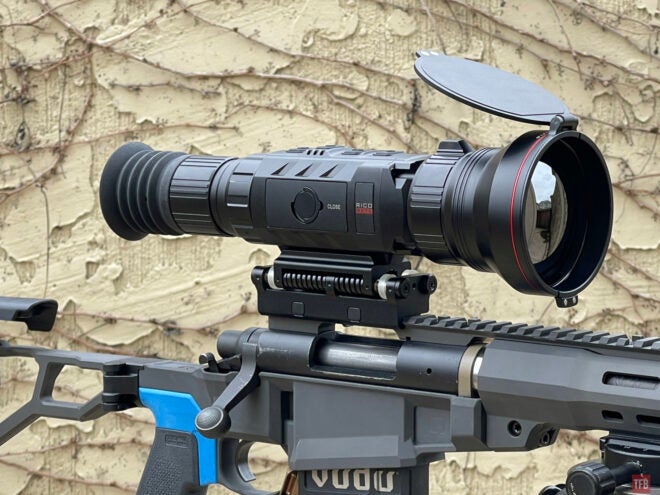Welcome to Friday Night Lights. For those of you who are new here, Friday Night Lights is a weekly column that focuses on the electro-optical side of firearms. I review night vision and thermal devices as well as accessories related to such topics. Today we take a look at the first high-definition thermal optic by InfiRay Outdoor. iRayUSA was kind enough to lend us their RS75 RICO HD which has a whopping 1280 resolution. So let’s dive in and take a closer look.
InfiRay Outdoor @ TFB:
- Friday Night Lights: iRay RH25 Rico Micro – All-In-One Thermal Monocular, Clip-On, Weapon Sight
- Friday Night Lights: iRay Clip 1 – Jerry CE2 C.O.T.I.
- Friday Night Lights: iRayUSA New RICO MK1 W/ Laser Range Finder
- Friday Night Lights: PSQ-20 vs InfiRay JerryF – Fusion Monocular Duel
High Definition Thermal RS75 RICO
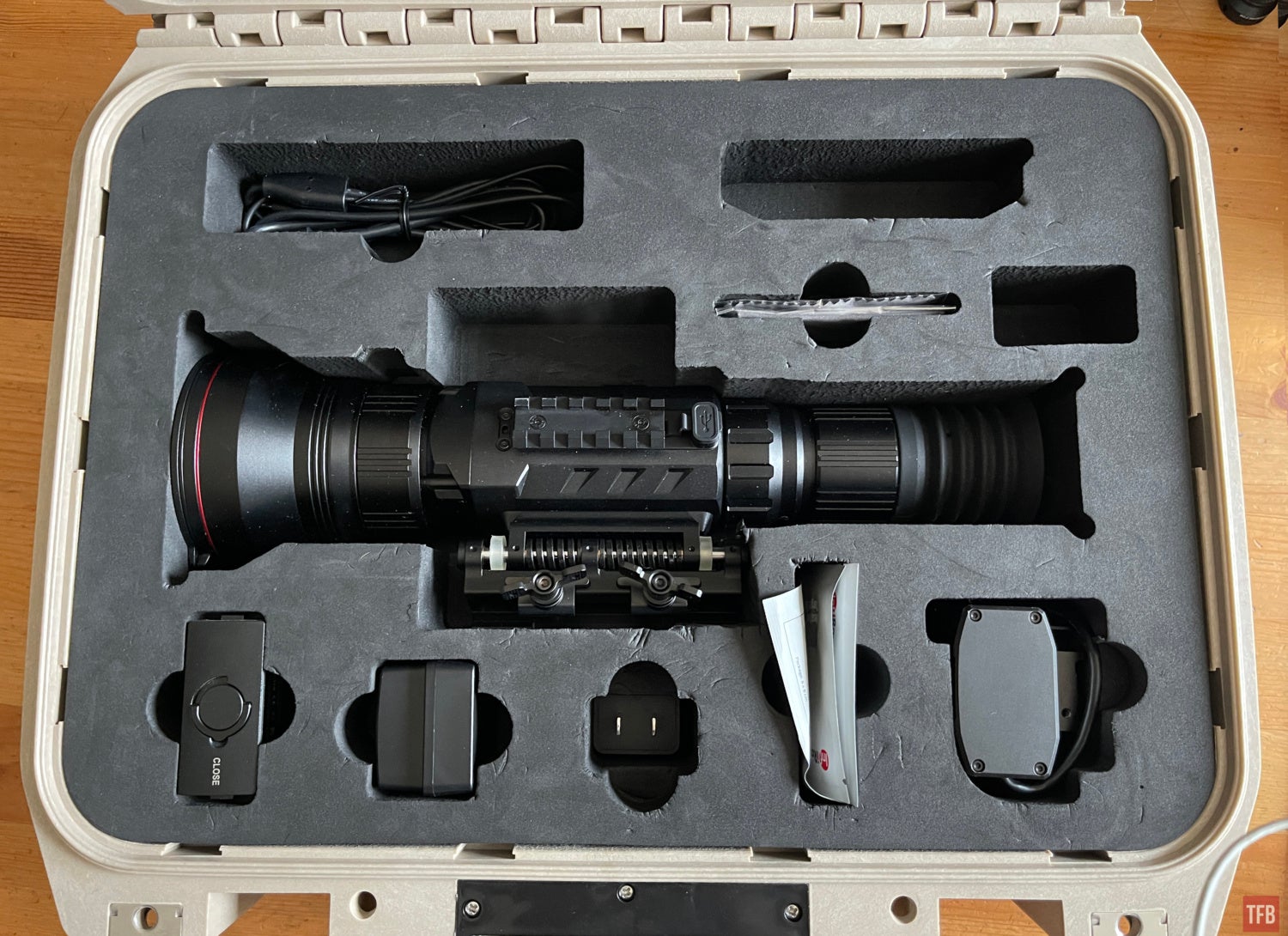
The RS75 comes in a hard case with custom-cut closed-cell foam. It has compartments for the spare battery, battery charging dock, USB power adapter, USB cable and laser rangefinder.
The RS75 is similar in design and function to the RICO MKI that I reviewed a year ago. The buttons on the RS75 are the same as the RICO MK1 and they perform the same functions.
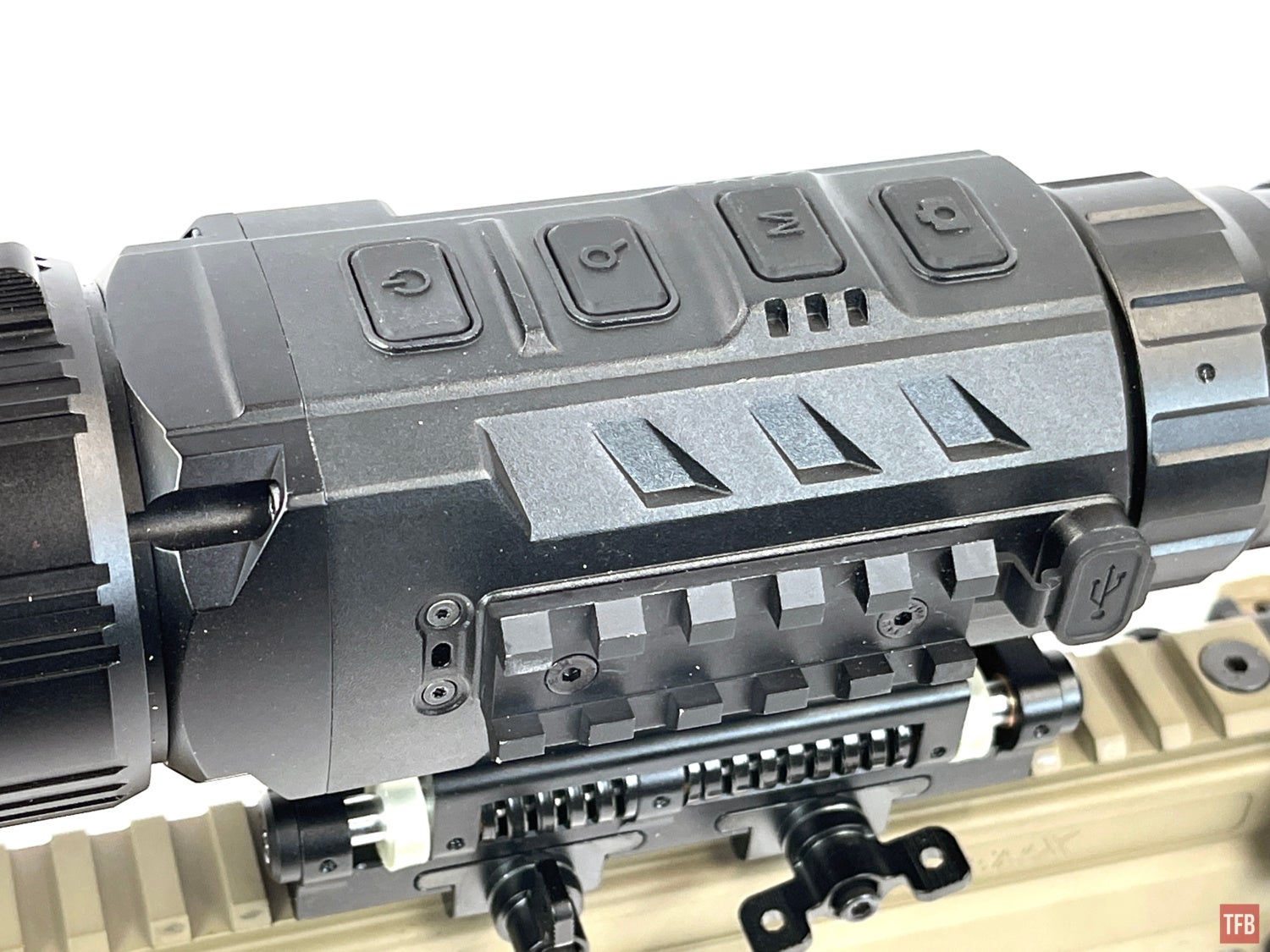
Since there are only four buttons (Power, Zoom, Menu, and Photo), there are combinations of button presses and multiple button presses to control the RS75. It can be a little convoluted like pressing down zoom and camera to access the integrated laser rangefinder. See the scan of the manual below for all the menu options.

On the left side of the RS75 are a short Picatinny rail and the USB-C port. The rail is for mounting the ILR-1000 LRF laser rangefinder and it has a short USB-C cable to plug into the RS75. You can use the USB cable that came in the box to download videos and images off the RS75 as well as power the RS75 with a USB power bank. You can use the TNVC USB power bank as they have a housing that comes with it that can attach to a Picatinny rail. Perfect for more run time with the RS75.

The RS75 is powered by the same brick-shaped battery as the RICO MKI. It comes with two sets of batteries. Each one will power the RS75 for 4+ hours.

Lift the semi-circular latch and rotate it clockwise to unlock the latch. Then you can pull the battery out to recharge it and switch to the spare battery.


Unlike the RICO MKI, the RS75 has a ring behind the objective lens for objective focus.
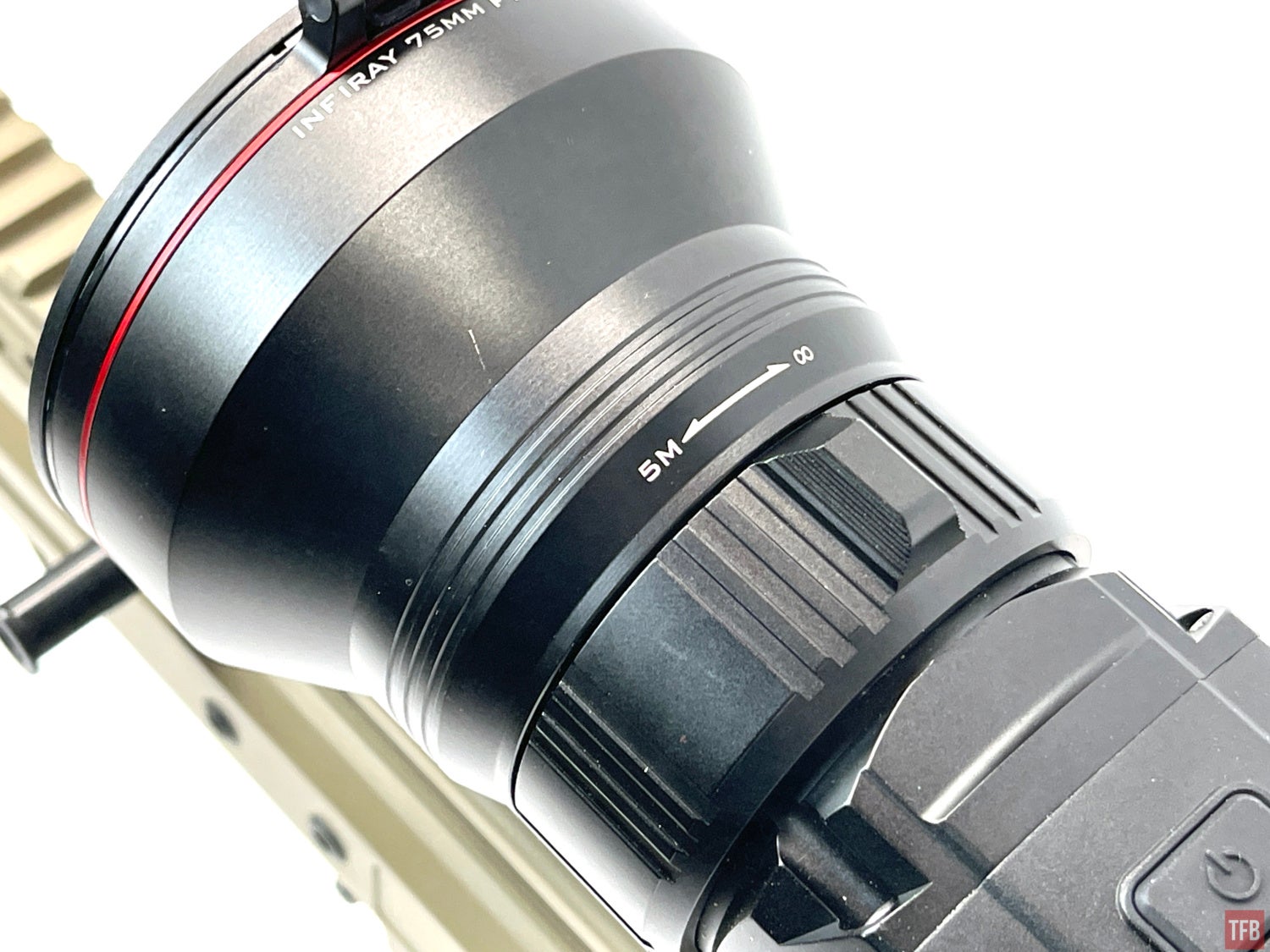
The lens cap is machined aluminum.

You can rotate the lens cap in any direction you want.

The lens cap is held closed by rare earth magnets.

The one feature I found most intriguing was the recoil mitigating mount. It reminded me of the recoil shock isolating mount that came with my RICO MICRO RH25, only the one on the RS75 looks like it is on performance-enhancing drugs. If you look closely, it appears to mitigate shock for both rearward and forward recoil impulses. I will test that later.

Mounting the RS75
The height of the recoil mitigating mount is rather tall but that is important since the RS75 has a large 75mm objective lens. Here are some bolt guns I mounted the RS75 to.

RS75 on my Q SideChick Remington 700
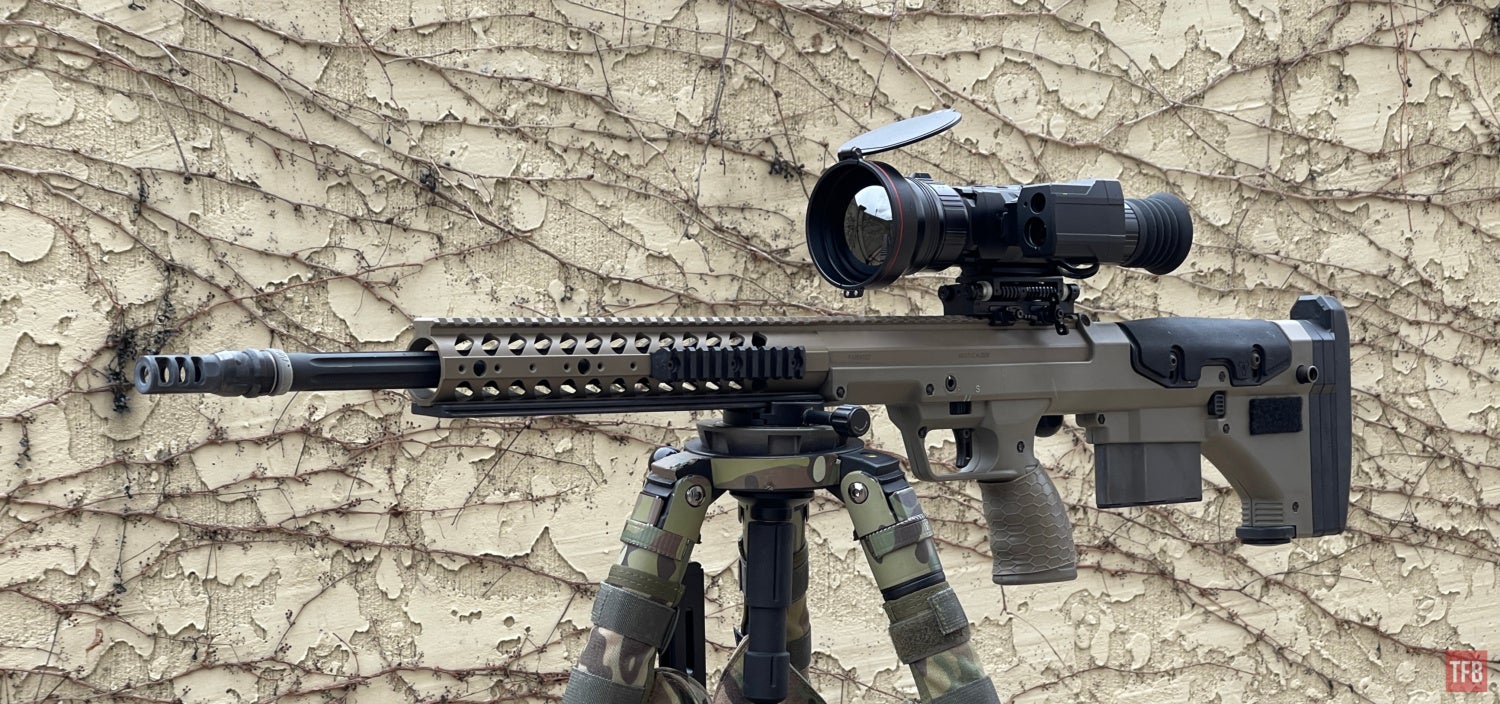
RS75 on my Desert Tech SRS A1
With the tall mount, you need to raise your cheek rest for a proper cheek weld. Even with the adjustable cheek rest on my SCAR17S, the eyepiece was still a little bit too tall for a cheek weld.

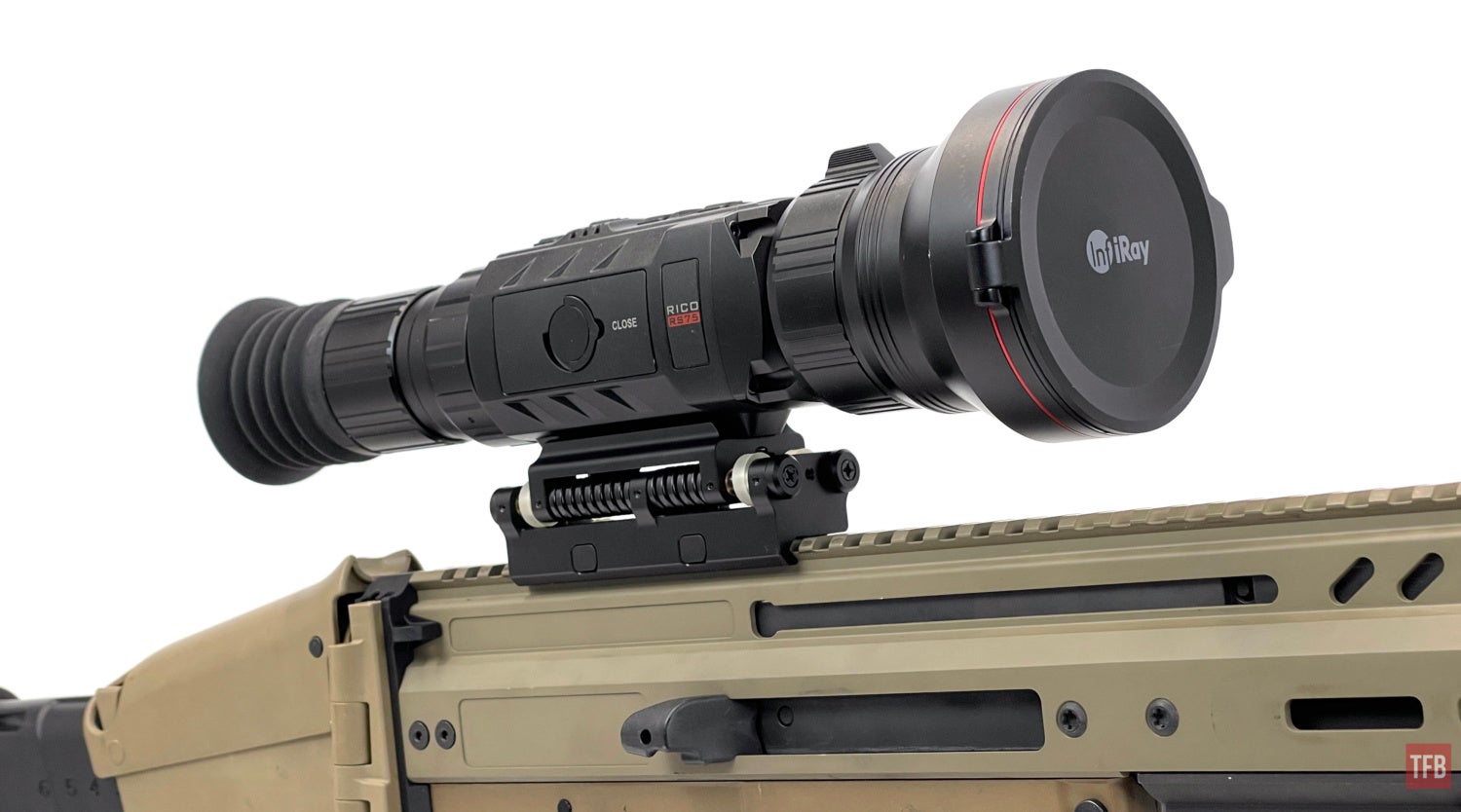
Using The RS75
Of all my guns, aside from the ULR Mini .50BMG I reviewed, the SCAR17S has the most recoil I have seen. You don’t really feel it that much like the ULR Mini but watch what happens to optics. There appear to be three recoil impulses with a SCAR17S.
- Initial detonation of the cartridge
- Bolt bounce as it hits the back of the receiver
- Bolt bounce as the bolt closes. (this one is a lot milder)
If you recall, I used the same SCAR17S (actually an Imperial Arms Co. Cypher X) to test the recoil of the shock-isolating mount for the RICO MICRO RH25.
Well, I used the same gun to test the recoil-mitigating mount of the RS75.
The recoil mitigating mount is allowing the RS75 to move and you can see it bounce under the three recoil impulses. However, when those impulses happen, the image of the RICO HD 1280 is jarred a bit. See the video above.
One thing you will notice when looking through the RS75 is how amazing the thermal image is. It is so crisp and clean.

The RICO HD 1280 has a detection range of 3,600 yards. Seeing these cows 2,200 yards away was easy.
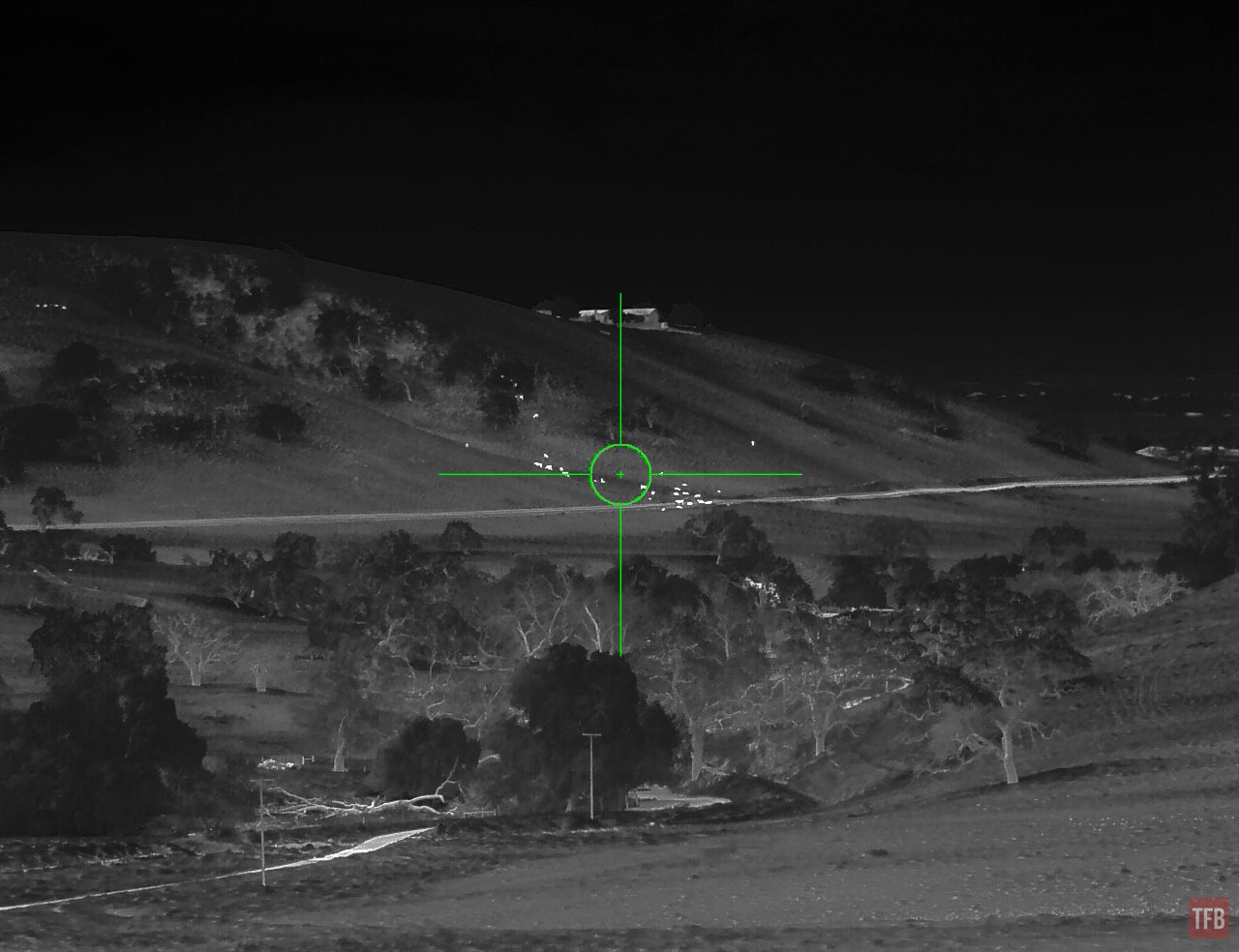
Cows over 2k yards away.
Now compare that to the image below. This was a photo I took with my iPhone looking through a BAE UTBx which only has a 640 resolution. Also, I am photographing through an eyepiece and I lose a lot of resolution doing that. While it was able to see the cows and the building above them, the InfiRay Outdoor RS75 is just a better image. The UTBx is not cheap either. It costs more than the RS75.

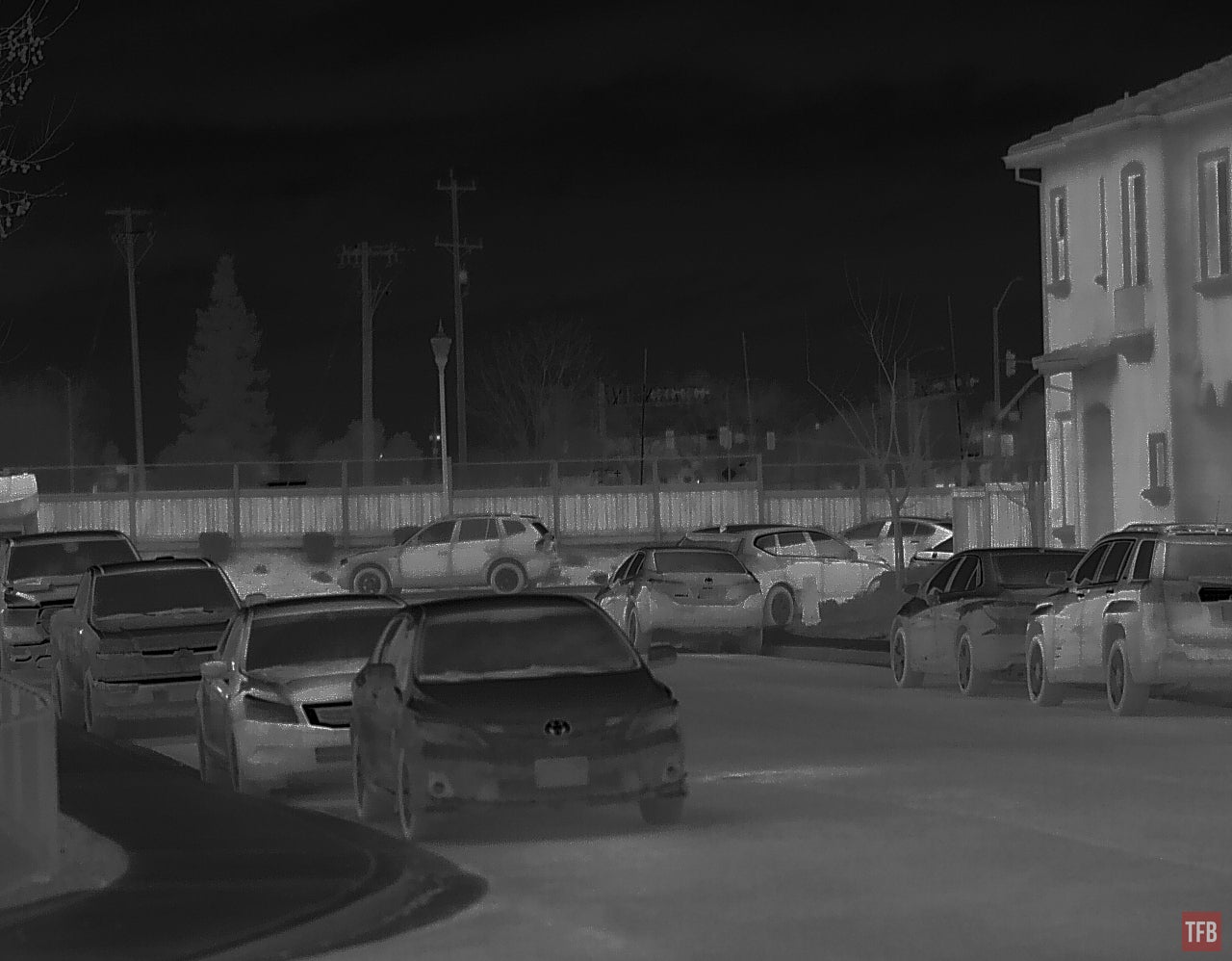
The RICO HD 1280 has a base optical magnification of 2x. If you press the zoom button, it will digitally zoom in to 4x, 8x and 16x. At 16x, the image looks like the image below. That is the front wheel of the SUV in the photo above.
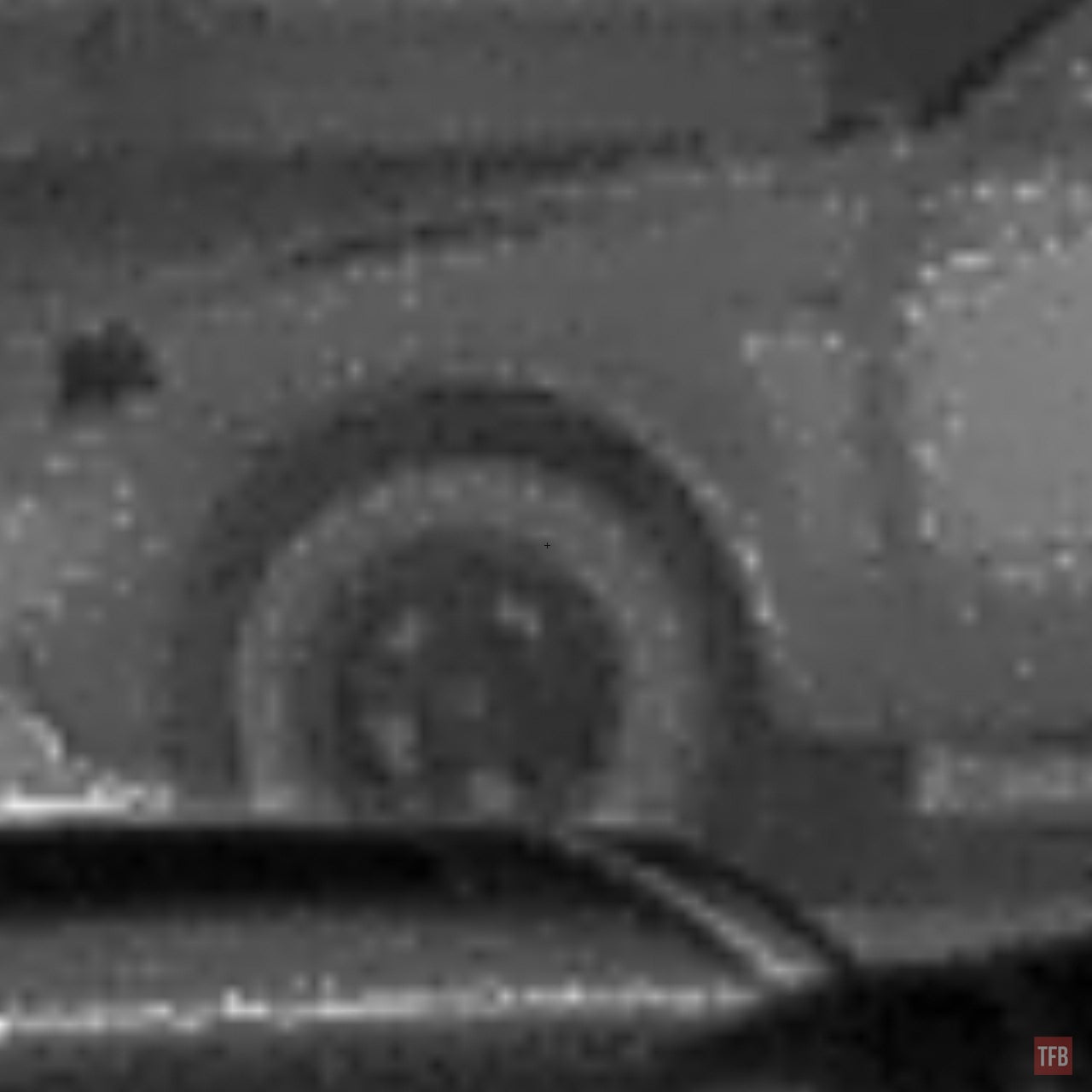
Here is a neighbor crossing the street just over 150 yards away.
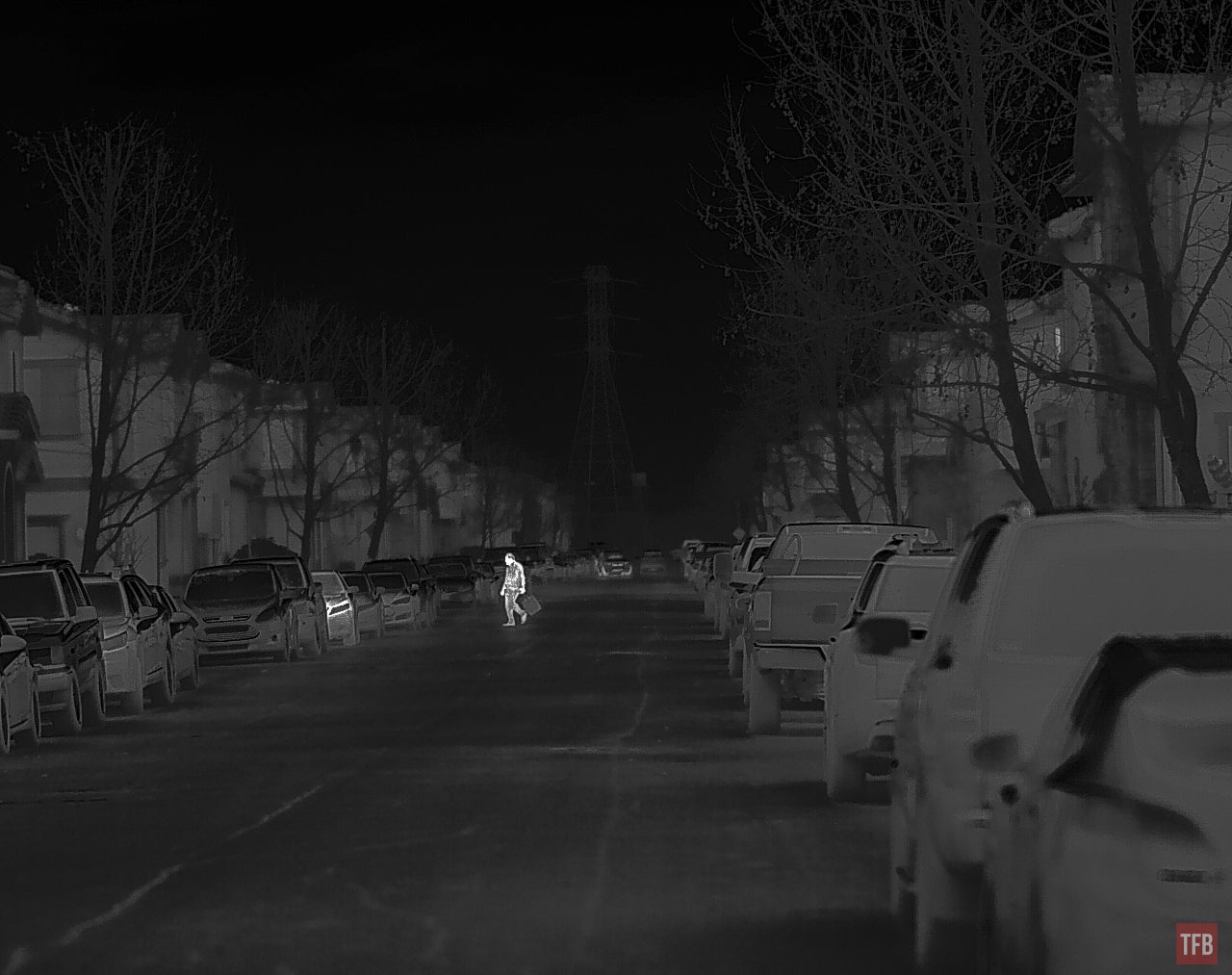

This thermal image almost looks like a regular black-and-white image.


This is the shed I test a lot of optics on. It is 530 yards away.


Here are two animals that were probably 1,500 yards away. I tried using a 2x thermal magnifier to boost the RS75 performance a bit. I used the same magnifier with the Trijicon UTC XII and it helped a lot. However, in this case, it did not. I think they might be coyotes but that is based on behavior than recognizing their shape. I definitely cannot ID them this far away. I do not think they are pigs and cows are bigger at that distance.

I zoomed in on the unknown animals but it was just a pixelated blob.
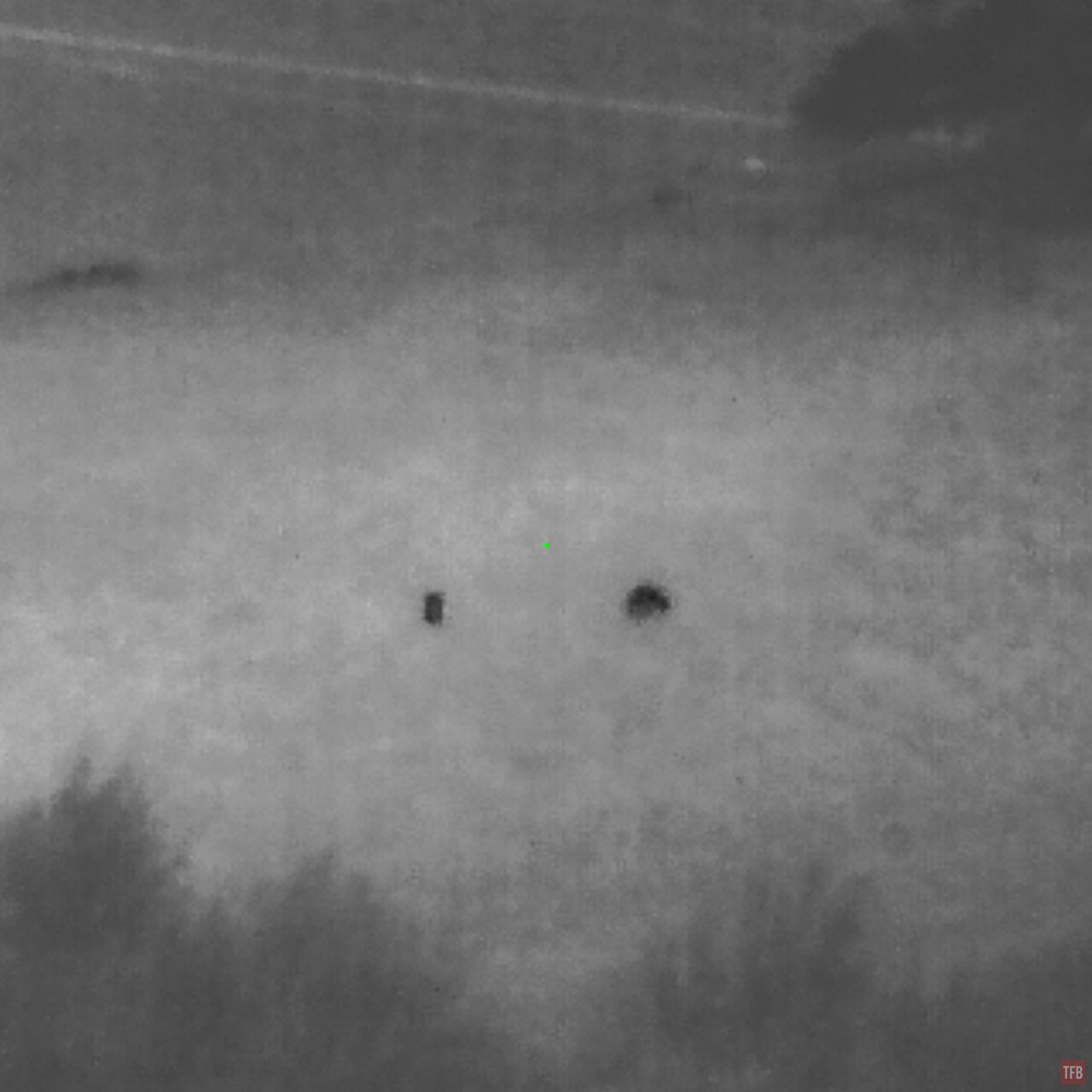
For due diligence, I tried my PVS-30 and a 1-6x Meopta LPVO to look at the unknown animals. They just show up as black blobs.


Final Thoughts On The RS75 RICO HD
The image on the RS75 looks amazing. The 1280×1024 resolution is just gorgeous to look at. However, I was expecting more. With a base magnification of just 2x, I feel a little disappointed I cannot see more clearly at further distances. Zooming in at 4x reduces the resolution now to 640 like my RICO Micro RH25 but the things I want to look at look more pixelated than I would like. But perhaps I am asking too much out of the RS75? The price is a lot at $17,999. I was hoping this would be able to do long-range shooting like the Trijicon UTC XII, Pixels On Target Voodoo-M or even the EOTech Clip-IR-LR. The first two I just mentioned are north of $20k but the EOTech Clip-IR LR retailed for around $15k and all of them are just 640-resolution thermal cores. I know those devices and the RS75 are two completely different systems. One is a weapon-mounted sight and the other is a long-range thermal clip-on. But having seen and shot through all of them, I want more out of the RS75, especially for the price. Don’t get me wrong, I am comparing this to a more expensive system. And that is not a fault of InfiRay. I have unique tastes and want to see more further away. I hope InfiRay Outdoor consider using the same technology in a long-range thermal clip-on. With such a high resolution, you should be able to use higher magnification scopes to look at the thermal image.
At the moment, there is nothing like the RS75 RICO HD 1280. It has the best thermal image I have seen but it comes with a hefty price tag. It is cheaper than some of the other thermal devices I mentioned earlier and it has double the resolution of those systems. So if you want to best thermal image for your hunting needs and money is no object, then consider the RS75 RICO HD 1280. Thanks to InfiRay Outdoor for letting me borrow their RS75 for this review.
We are committed to finding, researching, and recommending the best products. We earn commissions from purchases you make using the retail links in our product reviews. Learn more about how this works.
 Your Privacy Choices
Your Privacy Choices
